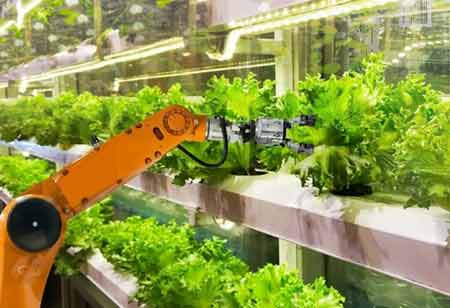Thank you for Subscribing to Agri Business Review Weekly Brief
Cropland innovation is enabled by precision agriculture.
The agricultural industry is undergoing an increased adoption of modern technologies.

By
Agri Business Review | Monday, April 25, 2022
Stay ahead of the industry with exclusive feature stories on the top companies, expert insights and the latest news delivered straight to your inbox. Subscribe today.
Agricultural activities are on the verge of a technology-enabled transformation to see process optimization and substantially enhanced yields.
FREMONT, CA: The agricultural industry is undergoing an increased adoption of modern technologies. The wave of digitalization has now touched agriculture, and stakeholders are introducing technology-backed methods to overcome long-standing challenges and drive better revenue growth. For example, the industry is now trying to enhance itself with precision agriculture, which is a data-backed agriculture process. With precision agriculture, farmers can gain a lot of impactful intuition about factors that specify crop yield. From soil sampling for nutrient content perseverance to advanced weather prediction, precision farming covers various technological applications that benefit the agricultural sector.
The agricultural sector confronts several challenges, and changing weather patterns, increased the occurrence of natural disasters, lowering soil fertility can take a toll on the primary industry. Technology-driven solutions empower farmers to undertake all of these and bring about development in yield. As the cost of technologies decreases, even developing countries will look forward to advancing and shifting into precision agriculture.
Service providers are now running to create solutions for the agricultural industry and call themselves agricultural technology companies. They allow farmers to deploy technology in their fields. The most apparent advantages of adopting these solutions involve improved efficiency in using resources such as water, fertilizers, and chemicals, better risk mitigation, higher quality yields, and reduced wastage.
Drone and satellite imagery is a crucial aspect of precision farming. These technologies can determine the crop's health through aerial surveillance. By considering different wavelengths of light, calculations can be made about the general health of the crop and detect variability in it. Controlling pests and weeds comes easy with crop scouting, another example of precision agriculture. A stakeholder has to enter detailed information about their crop onto an evaluating platform in crop scouting. The platform yields insights that help farmers take steps towards enhancing the health of their harvest.
Yield data analysis and forecasting are essential to an agriculturalist. With the support of smart sensors attached to machinery used in the field or with the help of satellite imagery, farmers can monitor factors that might imply the yield. Thus, precision agriculture allows farmers to determine how the crop is headed and the potential yield. Yield sensors are frequently attached to machinery like tractors and harvesters and help determine grain yield, moisture levels, texture, organic matter, salinity, and deficiency of nutrients. Thus, farming becomes smarter with precision agriculture.
The data that modern equipment can improve ct can be leveraged to create directly applicable solutions. Thus, data management becomes vital in precision farming. Software platforms that empower farmers to accumulate relevant data and recommend farming strategies have gained traction. These digital abilities add real value to all information captured. Other weather records and crop records are also available. Data from these can be unified into solutions to customize them.
Like other industries, farming has immense benefits in automation. Robotics technology has led to the development of robots exclusively for agricultural purposes. These robots can assist farmers in surmounting human limitations. Likewise, the Internet of Things has many applications in agriculture. By generating a network of connected devices, farmers can obtain remote control over operations. Technology has enabled farmers to automate irrigation, pesticide application, and many other aspects. Accelerating swiftly, the agricultural industry can develop well to make the most of technology.





